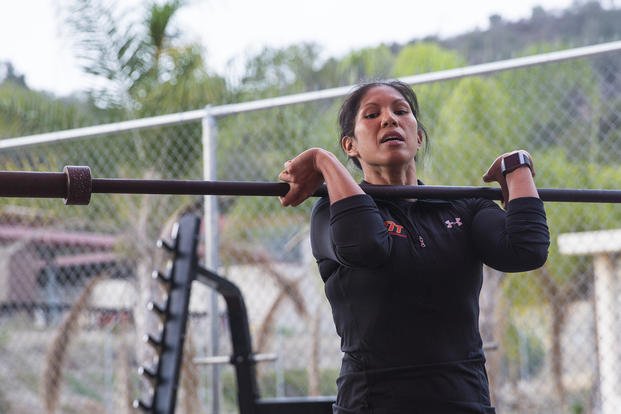Many veterans seek service in law enforcement after completing their enlistment or retiring from the military. Here is a typical problem many vets and others have when preparing for law enforcement special-ops programs:
Hey, Stew,
I have a question or two about preparing for a selection program with a Special Ops group. For the past two years, I have been a competitive powerlifter. I know this will not help me for the PT test, so I am seeking advice on the transition.
I used to run one mile in 5:51 and 1.5 miles in less than 10 minutes. That was 50-60 pounds ago. I have gained some body fat in the process to gain one rep at maximal strength. I want to get to this level of conditioning again. I noticed your recommendation is to drop weights completely. I'm willing to do this for the time being.
My end goal is to earn a spot on a SWAT team. I know many of the guys on the team lift heavy weights on top of their calisthenics and running. For now, should I focus on running and calisthenics since I suck at them? Also some of your programs state that they're not for beginning runners. I'd definitely be labeled a beginner runner now. What would be my best option? I want to run a nine-minute, 1.5-mile run but I must pass first (12:40).
Yes, you are on the right track and have the right mindset with this workout transition, but there is a question many fail to consider when preparing for any selection program when coming off other forms of fitness and athletic training:
What is the difference between getting to, through and after selection training programs?
These are all very different methods of training that a successful candidate must consider. The differences are vast, but it can be accomplished with a few cycles of changing up your current routine. I call it getting to and through the selection training program:
1. To the training: Getting to the training likely will require you to ace a fitness test of calisthenics, a fast run and a medium distance run. Lifting weights can hamper these scores, especially heavy lifting on the legs. It is best to drop the pure power-lifting type of weight workout for a cycle or two and add more high-repetition calisthenics and cardio options to lose weight and get faster with greater muscle stamina.
2. Through the training: Getting through the training requires even longer distance running and obstacle courses, high-rep calisthenics and other tactical training that are a mix of anaerobic and aerobic. Some SWAT schools also will include swimming and possibly mountaineering, depending on the environment in your district.
3. After the training. Once at the team, you will find operators will lift more, do more sprints, focus on more agility work and take on fewer long-distance runs (but still do some). Some may opt for more non-impact aerobic activity to reduce being banged up too much. But to lift like an operator now, before selection, is an error many people make.
On beginning running: I do have beginner running plans that you may want to supplement and replace any longer, harder runs.
See Ramp Up Your Running Program.
Running a little and doing non-impact cardio is a great way to start the transition process from power-lifting athlete to hybrid tactical athlete. Your knees and shins will thank you for it, too.
Consider The SWAT Workout, which addresses this training cycle of to, through and after training.
Stew Smith is a former Navy SEAL and fitness author certified as a Strength and Conditioning Specialist (CSCS) with the National Strength and Conditioning Association. Visit his Fitness eBook store if you’re looking to start a workout program to create a healthy lifestyle. Send your fitness questions to stew@stewsmith.com.
Want to Learn More About Military Life?
Whether you're thinking of joining the military, looking for fitness and basic training tips, or keeping up with military life and benefits, Military.com has you covered. Subscribe to Military.com to have military news, updates and resources delivered directly to your inbox.




















